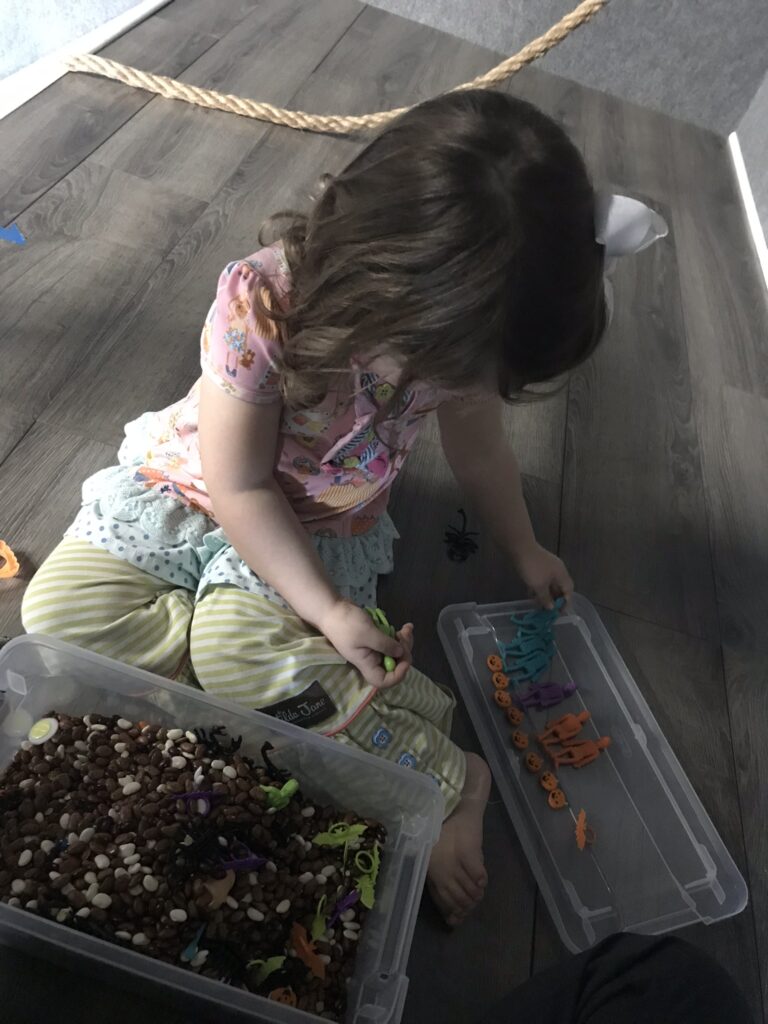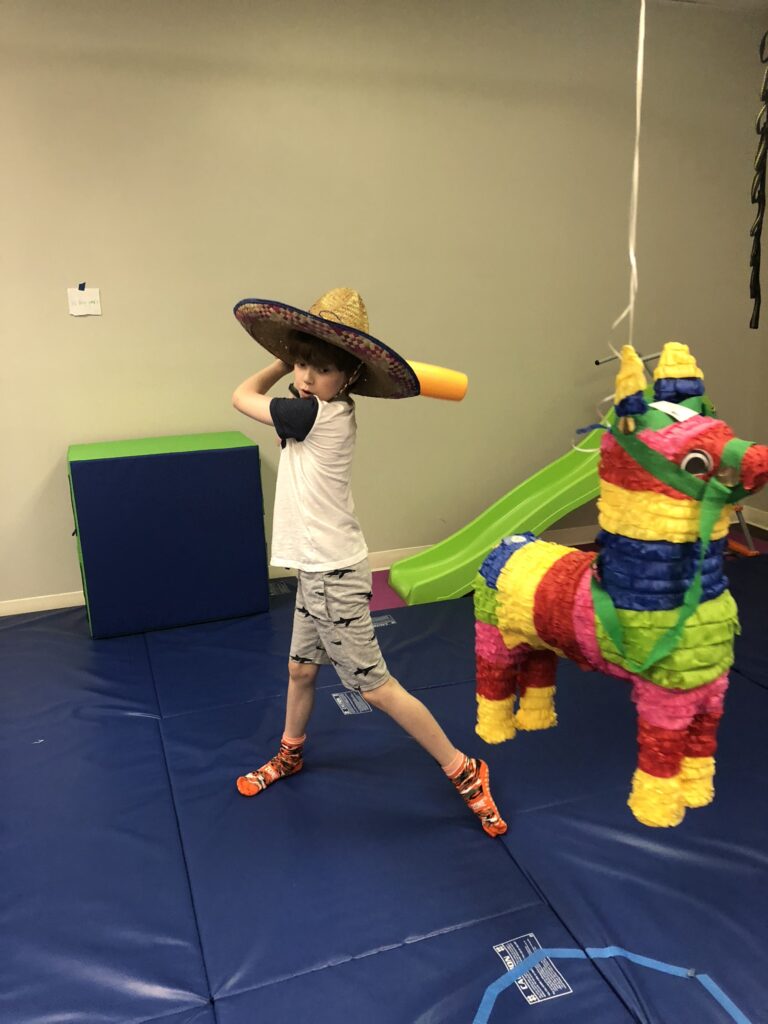What is Crossing Midline?
When Occupational Therapists refer to “midline”, they are describing the body’s imaginary line down the center of the body that divides it into the right and left sides. Crossing midline is the ability to reach across that imaginary line with the arms and legs to perform a task on the opposite side of their body. Crossing midline emerges during early developmental play when children complete bilateral movements to engage with their environment.
Why is Crossing Midline important?
The ability to spontaneously cross midline promotes communication to left and right hemispheres of the brain which plays a major role in developing bilateral coordination. When a child crosses midline it also supports development of a dominant hand which is necessary to develop good fine motor skills. If a child does not fluidly cross midline it can affect writing, reading, cutting, dressing, self-feeding, bike riding and the ability to visually track a moving object required for catching a ball.
How do I know if my child has trouble crossing midline?
Your child may have difficulty crossing midline if you notice these behaviors:
- Switching hands during an activity when older than 3 years (coloring, cutting, throwing)
- Difficulty performing age-appropriate self-care tasks independently (getting dressed, feeding, buttoning)
- Turning their whole body to get an item on the opposite side instead of reaching across the body
- Have poor reading and/or writing skills
- They switch feet to kick a ball when older than 3 years
- Difficulty coordinating age-appropriate gross motor movements (jumping jacks, bike riding, catching)


How do Occupational Therapists improve midline crossing?
Our Occupational therapists at MPPT are skilled in providing intervention focused on bilateral integration, improving body and midline awareness via sensory integration techniques, and improve core stability and promote trunk rotation to cross midline for independence in activities of daily living, school, and play tasks.
- Daily Life Skills: Incorporate some midline crossing activities into your daily life skills (eg set up socks and shoes for dressing on the wrong side of the body when the child is sitting so they are forced to cross the body’s midline to dress.
- Core Stability: Work on core stability and trunk rotation to encourage the physical movement of crossing the body’s midline.
What are the building blocks necessary to develop the ability to cross the body’s midline?
- Bilateral integration skills (using both sides of the body at the same time).
- Core stability and trunk rotation: The muscles of the trunk that help to stabilize the body so the arms and legs can be moved with control.
- Hand dominance: The consistent use of one hand or foot most often allows refine movement control to develop.
- Planning and sequencing: The ability to follow multi-step instructions to achieve a defined outcome or end point.
- Body awareness: The information that muscles and joints send to our brain that tells us about our body position.
What can be done to improve the ability to cross the body’s midline?
- Bilateral Integration Skills (using both sides of the body at the same time).
- Daily Life Skills: Incorporate some midline crossing activities into your daily life skills (eg set up socks and shoes for dressing on the wrong side of the body when the child is sitting so they are forced to cross the body’s midline to dress.
- Core Stability: Work on core stability and trunk rotation to encourage the physical movement of crossing the body’s midline.
